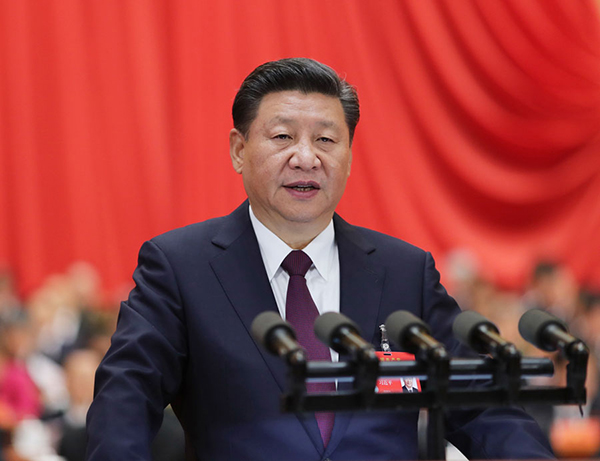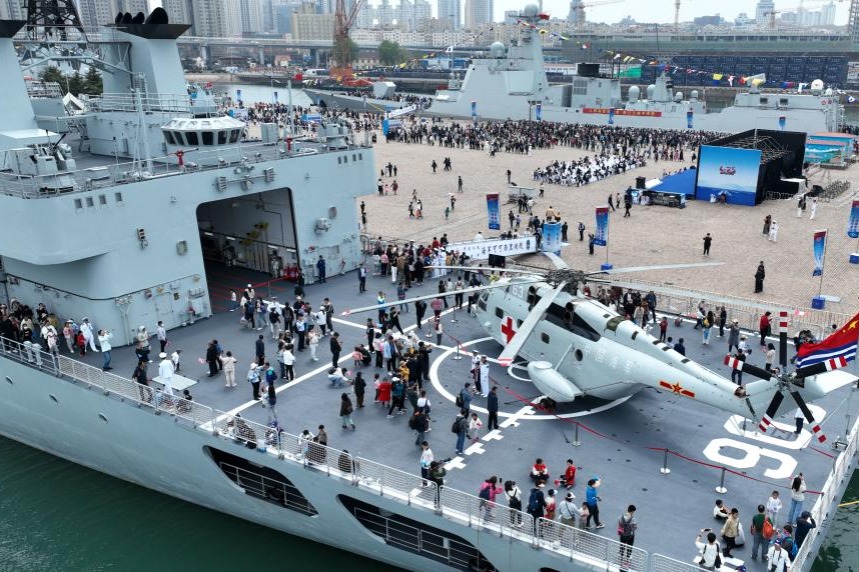'China solution' is diversified solution


With the beginning of a new year, the world is looking for new solutions. The global South has had enough cookie-cutter models applied by certain Western institutions and as espoused by their governments. Western models that talk democracy, transparency and governance (while failing to practice these ideals themselves) often ignore core issues that developing and less-developed nations need to address in order to pull out from poverty into a trajectory of sustainable development. Without infrastructure, transport, communications, electricity, water and healthcare, people's lives will not improve. External solutions that may have worked in Europe or the Americas may not work in China or other developing countries.
The 19th National Congress of the Communist Party of China marked the beginning of a "New Era" for China, and for the developing South as well. In crystallizing "socialism with Chinese characteristics for a new era," President Xi Jinping focused on eliminating poverty, closing income gaps, promoting ecology and green energy, resuscitating Chinese culture and heritage, and sharing its development experiences with other nations.
The 19th Party Congress for the first time emphasized China's role in an integrated global context, putting forth the concept of a "China solution" to global challenges. But the "China solution" by no means promotes China as a single model. It emphasizes the need for local solutions by people themselves who understand their own circumstances, rather than external theories imported from outside think tanks or multi-lateral institutions that may be insensitive or even unaware of local conditions and contexts.
Many countries of the global South have been frustrated by traditional "shock therapy" approaches forced on them cookie-cutter-style by certain Western agencies. Often these approaches are tied to political conditions or theoretical ideological frameworks and not effective. According to China's latest white paper on foreign aid (published in 2014), its foreign aid reached 89.3 billion yuan ($13.89 billion) between 2010 and 2012.
At the 19th Party Congress, Xi, who is also the CPC Central Committee general secretary, talked pragmatism. He suggested how the "China solution" could offer a pathway, or at least an example, for other nations seeking their own pathways toward development.
He also emphasized the "China solution" is by no means a singular model other nations should necessarily follow just like the models previously pushed by certain institutions in the West. But the "China solution" does suggest how infrastructure can offer a bandwidth for development.
Moreover, his emphasis was on "ecological civilization", meaning such infrastructure development should avoid the stage of polluting industry that China experienced in the past and is now rectifying, as it looks for solutions such as ecological cities that are smart and green.
The "China solution" is about sharing China's own experiences in overcoming development problems, closing gaps between rural and urban sectors, correcting social imbalances and environmental damage by combining planning with market. It is not about political ideology but pragmatism, about eliminating poverty, fostering development and the security that comes with prosperity.
The "China solution" is not a model in itself, but rather about applying experiences. Solutions are based on local culture and local conditions. However, China can share some of its experiences. The transformation of China from the 1980s to present has involved massive fixed asset investment in infrastructure. Many of China's provinces are land-locked. Without roads, railways, and communication networks, and ports in the coastal regions, there would not have been decades of surge in foreign investment and exports.
Since much of the developing world faces similar challenges-land-locked states across Africa, Central Asia and South Asia-the experience of China could be relevant.
In many respects by coining the term "China solution", Xi has set a tone for diversified localization rather than monolithic globalization. He has emphasized the need for respect of diverse systems based on different people's heritage, rather than the cookie one-model-fits-all approach that was forced upon developing countries by certain Western institutions. It is responsive to change, rather than reacting to crisis.
The whole point is that the "China solution" does not mean the solution came from China. Rather, it means the solution is with the culture, economy and psychology of each nation and its people. That is the "China solution".
The author is founding director of Himalayan Consensus Institute and a senior fellow at the Center for China and Globalization.

































